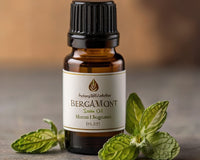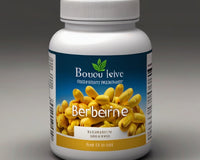What is L-threonine used for?
L-threonine is an essential amino acid, which means it cannot be produced by the body and must be obtained through diet or supplements.
L-threonine is involved in a variety of physiological processes, including protein synthesis, metabolism, the central nervous system, and the immune system. It is a key component of several important proteins, including elastin and collagen, which provide structure and support to tissues such as skin, tendons and cartilage.
Overall, L-threonine is an important part of a healthy diet and plays an important role in maintaining optimal health and wellness.
What are the main advantages of L-threonine?
Some of the main uses and benefits of L-threonine include:
1. Support protein synthesis:
As an important building block of several important proteins, including elastin and collagen, L-threonine plays a vital role in the synthesis of these important proteins that provide structure and support to tissues such as skin, tendon, and cartilage . A lack of L-threonine can lead to the degradation of these important proteins, which can lead to a range of health problems.
2. Regulate metabolism:
L-threonine helps regulate levels of other amino acids in the body, such as serine and glycine. By maintaining the proper balance of these essential amino acids, L-threonine helps support a healthy metabolism and overall health.
3. Supports the central nervous system:
As a key component in the production of neurotransmitters like serotonin and glycine, L-threonine plays an important role in supporting brain function and mental health. Getting enough L-threonine may help support healthy brain function and maintain a positive mental state.
4. Support the immune system:
L-threonine is involved in the production of antibodies and other immune cells, making it an important nutrient for overall immune system function. Getting enough L-threonine may help support the immune system and prevent illness and infection.
5. Support liver health:
As a key component in removing waste from the liver, L-threonine plays an important role in supporting liver health. By helping to maintain liver health, L-threonine can have a positive impact on overall health, including regulating metabolism and maintaining a healthy immune system.
While these are the main benefits of L-threonine, more research is needed to fully understand its effects and determine optimal dosage and administration methods. As with any supplement, it is best to consult a healthcare professional before starting an L-threonine regimen to ensure it is safe and appropriate for your individual needs.
What foods are the main sources of L-threonine?
L-threonine is found in a variety of foods. It is also available in supplement form, but it is important to consult a health care professional before taking any supplement.
Listed below are the main sources of L-threonine :
1. Meat: Animal protein sources, such as beef, chicken, pork, and fish, are among the richest sources of L-threonine. These proteins are particularly high in L-threonine, making them an excellent source of this essential amino acid.
2. Seafood: Fish and shellfish are good sources of L-threonine, with species such as shrimp, salmon, and halibut providing particularly high levels of this essential amino acid.
3. Dairy products: Milk, yogurt and cheese are all good sources of L-threonine, and dairy protein is especially rich in this essential amino acid.
4. Eggs: Eggs are an excellent source of L-threonine, with one large egg providing approximately 0.5 grams of this essential amino acid.
5. Poultry: Both chicken and turkey are good sources of L-threonine, providing about 0.6 grams of this essential amino acid per 3 ounces of cooked chicken.
6. Nuts and seeds: Certain nuts and seeds, such as almonds and sunflower seeds, are good sources of L-threonine, providing plant-based options for those looking to increase their intake of the essential amino acid.
7. Whole grains: Whole grain products, such as whole wheat bread, oatmeal, and brown rice, are good sources of L-threonine, providing a source of this essential amino acid for those who prefer plants. Based on protein sources.
8. Beans and Legumes: Beans, lentils, and peas are all good sources of L-threonine, making them valuable additions to a healthy, balanced diet.
9. Soybeans: Soy products like tofu and tempeh are good sources of L-threonine, making them an excellent source of this essential amino acid for vegetarians and vegans.
10. Fruits and vegetables: Certain green leafy vegetables, such as spinach and kale, are good sources of L-threonine, making them a valuable addition to a healthy, balanced diet.
Recommended Daily Intake (RDI) of L-Threonine
The recommended daily intake (RDI) of L-threonine depends on a variety of factors, including age, gender, and overall health status. The Institute of Medicine (IOM) has not established an official recommended daily intake (RDI) for L-threonine. However, the IOM classifies L-threonine as an essential amino acid, which means it must be obtained from the diet because the body cannot produce it on its own.
The appropriate intake level (AI) of L-threonine is as follows:
-
Infants 0-6 months : approximately 80-100 mg/kg/day
-
Infants 7-12 months : approximately 60-80 mg/kg/day
-
Children 1-3 years old : approximately 25-30 mg/kg/day
-
Children 4-8 years old : approximately 20-25 mg/kg/day
-
Children 9-13 years old : approximately 20-25 mg/kg/day
-
Adolescents 14-18 years old : approximately 35-45 mg/kg/day
-
Adults : approximately 40-60 mg/kg/day
It's important to note that these levels of artificial intelligence are estimates and may vary based on an individual's age, gender, weight, and physical activity level. It is best to consult a health care professional to determine the amount of L-threonine that is appropriate for your specific needs.
What are the main benefits of L-threonine for animals?
L-Threonine is commonly used as a dietary supplement in animal feeds to improve growth and feed efficiency. By improving feed utilization, L-threonine helps reduce production costs and improve meat and egg quality.
This amino acid is essential for animals, just like it is for humans. It plays an important role in maintaining overall health and well-being. Here are some of the main benefits of L-threonine for animals:
1. SUPPORTS MUSCLE HEALTH : L-Threonine is an important component of the structural proteins that make up animal muscles, tendons and connective tissue. It helps maintain muscle mass and function and promotes overall muscle health.
2. Helps maintain a healthy immune system : L-threonine is involved in the production of antibodies, which are an important part of the immune system. By helping support a healthy immune system, L-threonine can help protect animals from infection and disease.
3. Promote liver health : L-threonine is involved in the production of liver enzymes, which is very important for the normal functioning of the liver. It also helps maintain liver health by promoting the synthesis of key liver proteins and supporting liver detoxification processes.
4. Supports nervous system function : L-threonine is the precursor of the neurotransmitter GABA and is very important for maintaining normal nervous system function in animals. L-threonine helps support nervous system function and helps promote overall behavior, learning, and memory in animals.
5. Helps keep skin and coat healthy : L-Threonine is a building block of the structural proteins that make up animal skin and hair. It helps maintain healthy skin and coat by promoting the synthesis of key skin and hair proteins and supporting overall skin and hair health.
It is important to note that although L-threonine is beneficial to animals, it is very important to consult with your veterinarian before starting any new supplementation regimen, as the recommended dosage and method of administration may vary based on species, size, and overall health of the animal. Health status.














